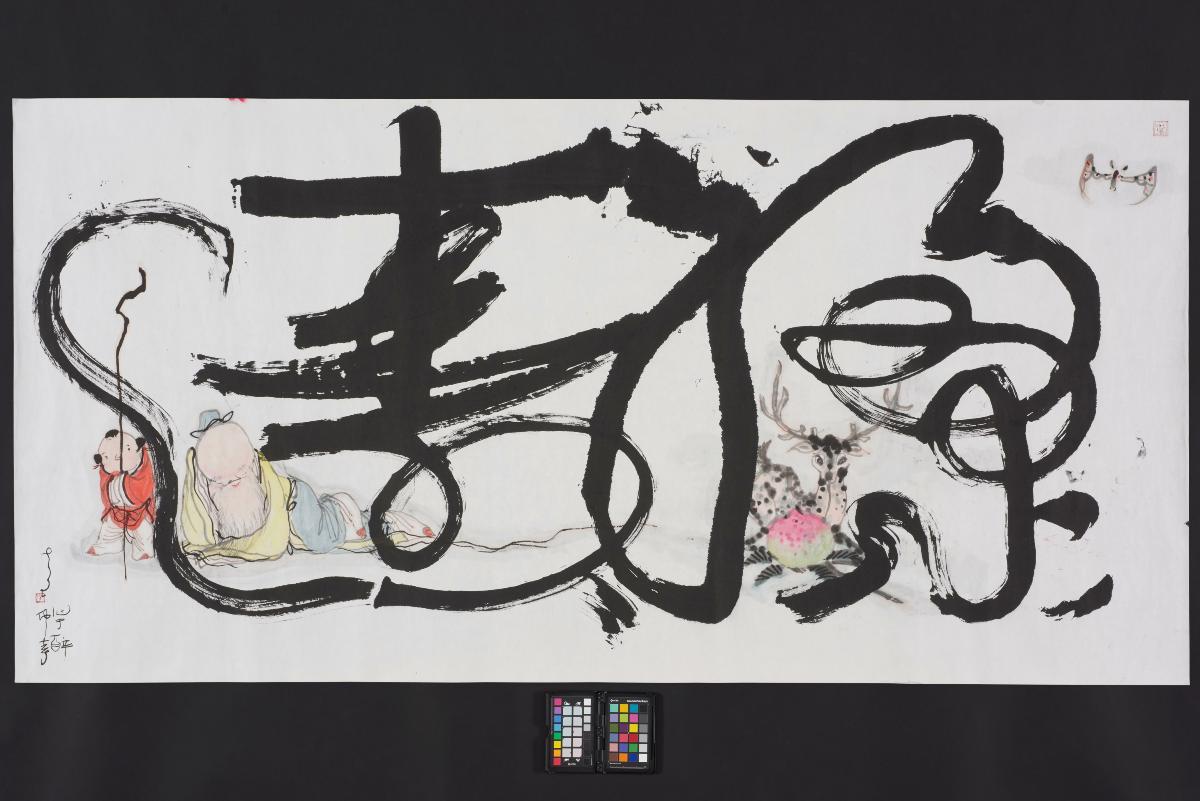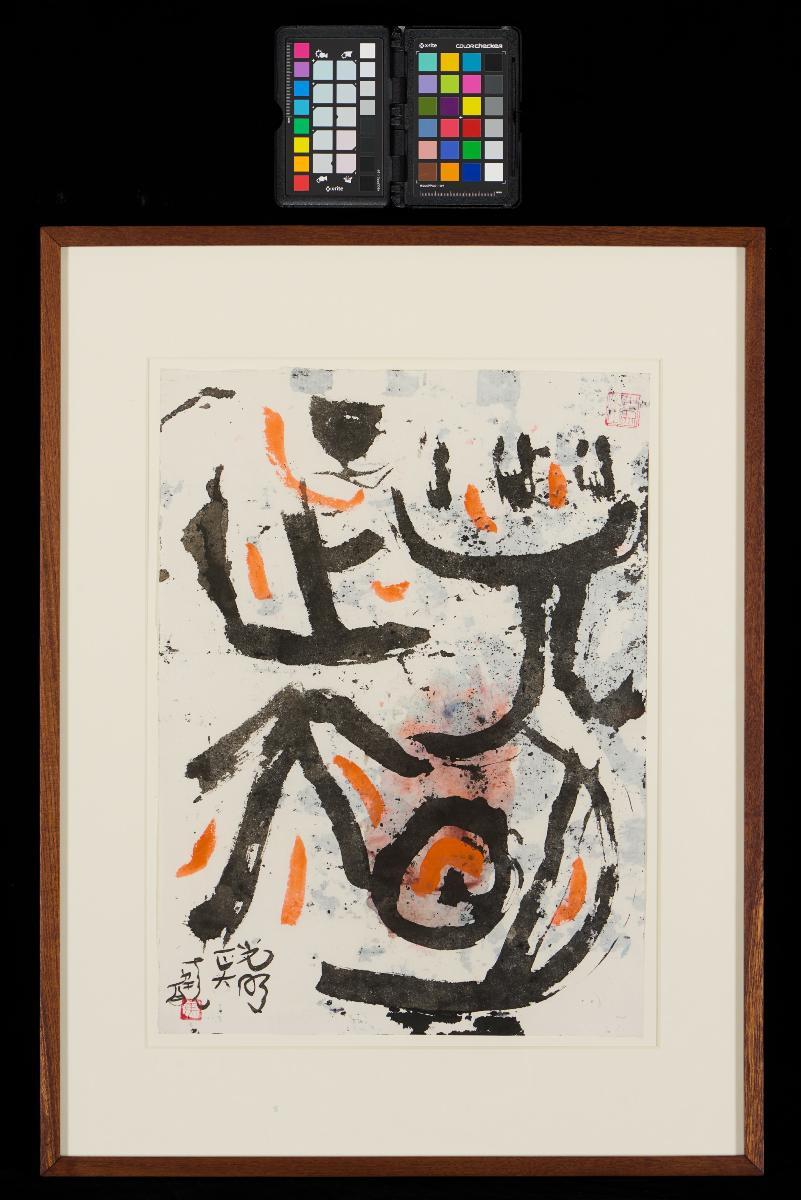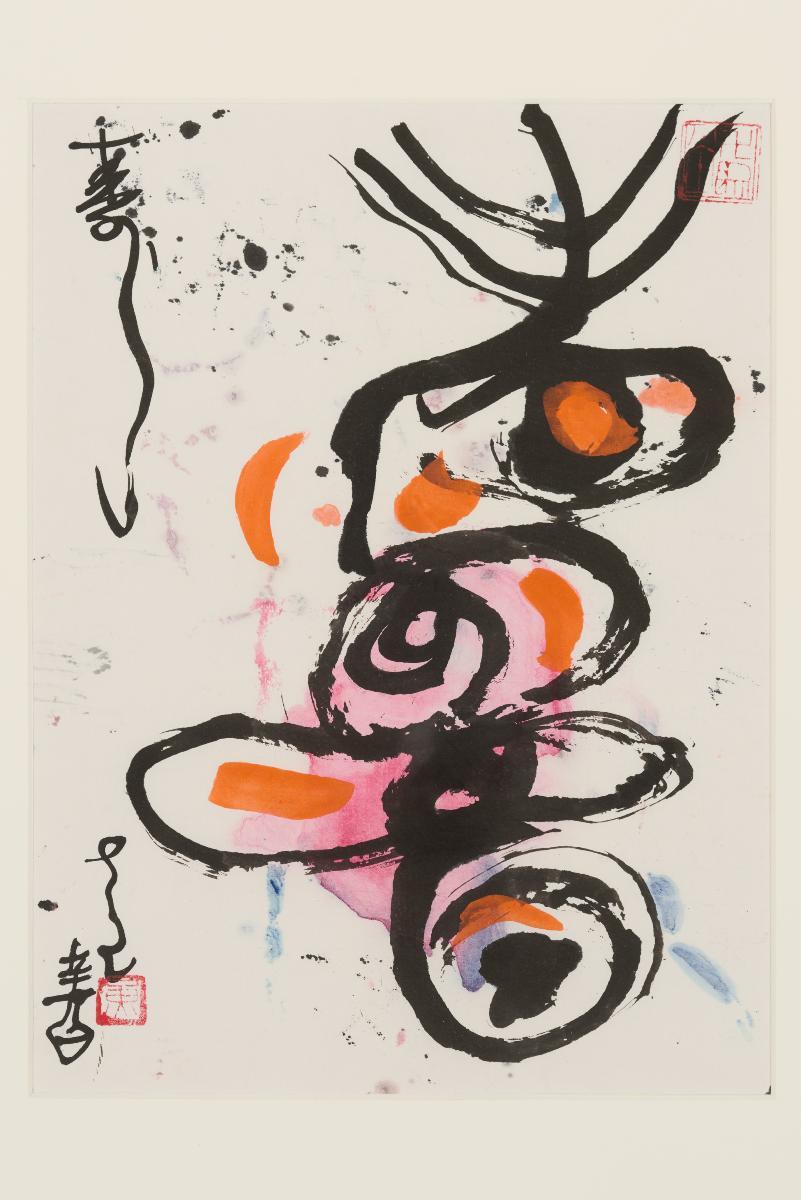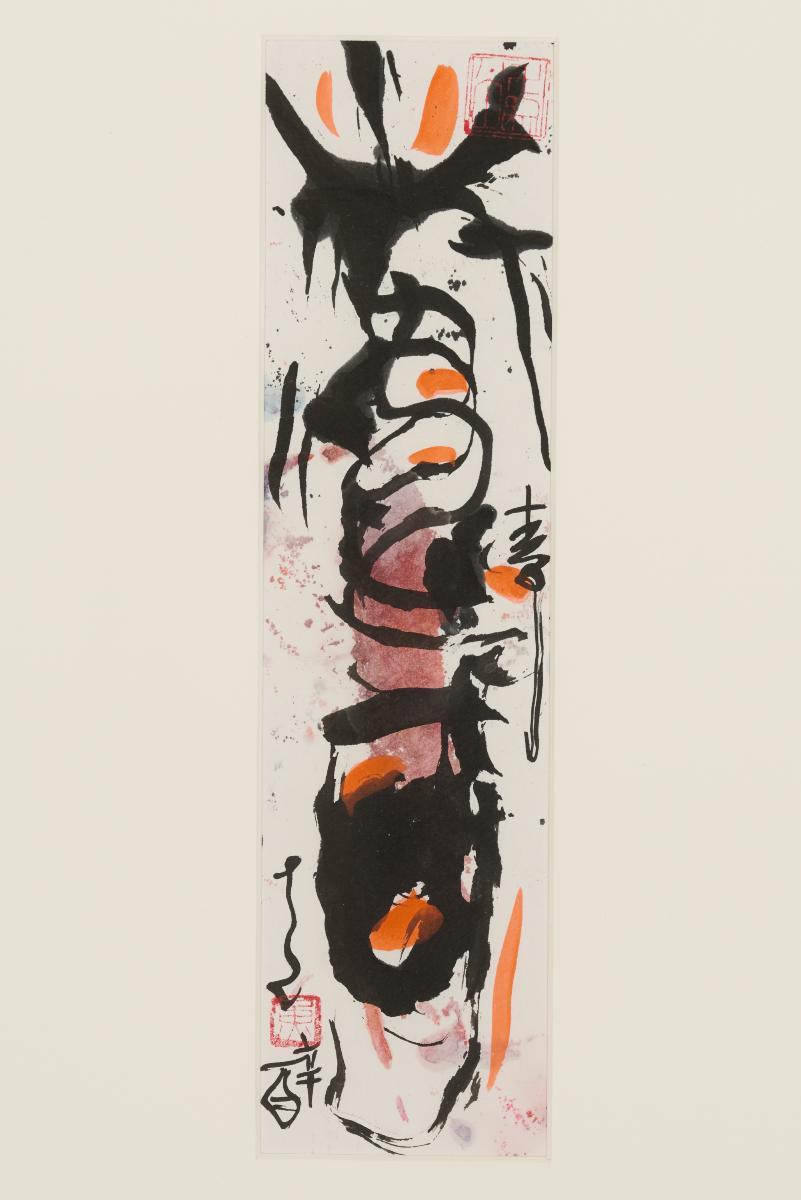Born to a literati family in Shanghai, China, Huang Yao (1914-1987) received his formative education from his father in classical literati traditions and calligraphy, particularly in the archaic scripts of oracle bone and bronze inscription. In the 1930s, he gained recognition as a talented cartoonist for creating the comic character “Niu Bi Zi” which was widely used as an educational resource in schools. Huang travelled to Southeast Asia after the end of World War II in 1945, and resided in different countries before settling permanently in Malaysia in 1956. He worked primarily as an art educator until his retirement in 1973. A prolific artist, he had held 23 solo and group exhibitions and six retrospective exhibitions.“Wenzi hua” (calligraphic paintings) are Huang’s scholarly contributions to the artistic and literary fields. The result of his research for over a decade, they display his inventiveness, especially from the 1970s. The Chinese characters of “happiness”, “prosperity” and “longevity” take center stage in this work as their symbolic or homophonic representations (peach and deer) appear in the background.















